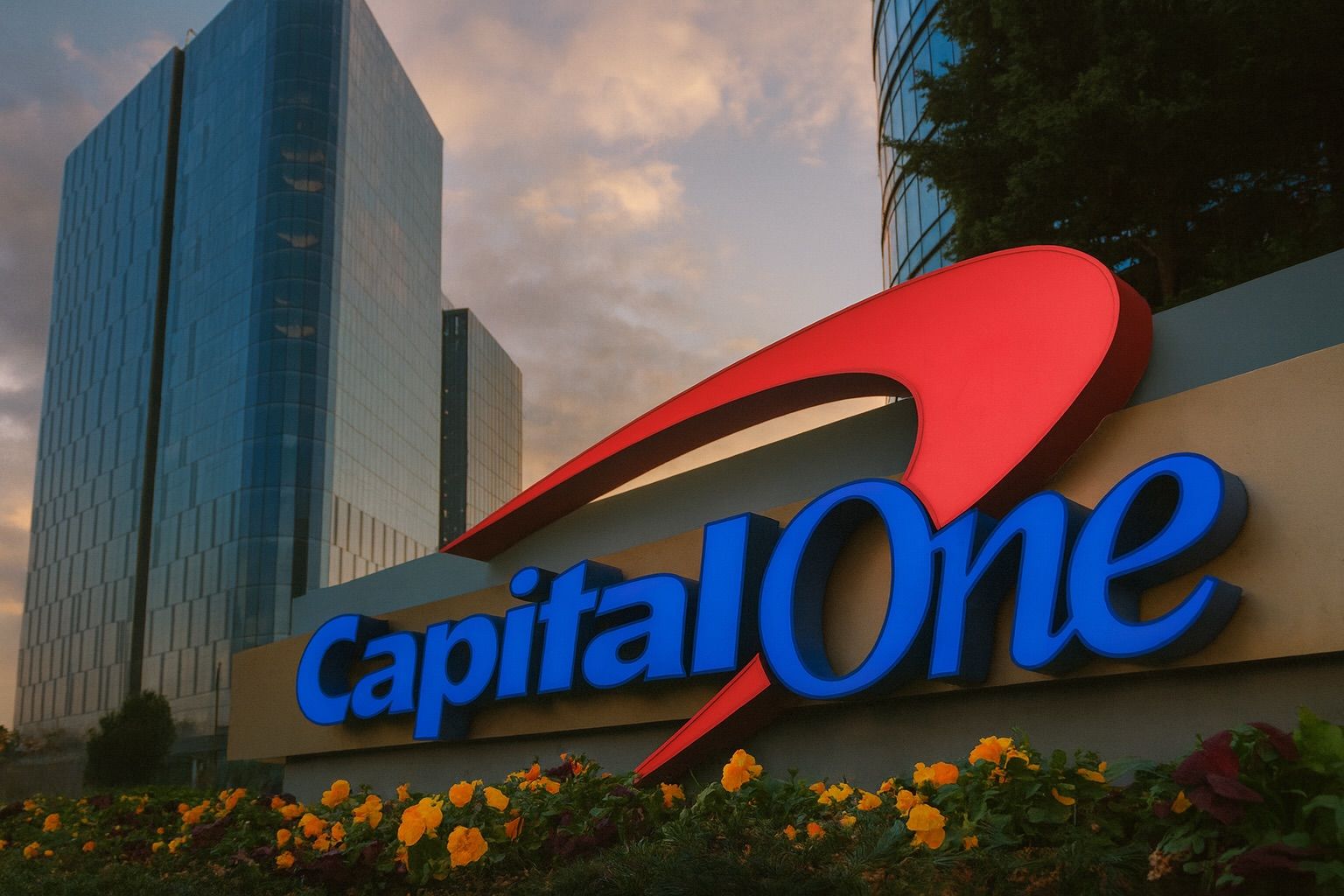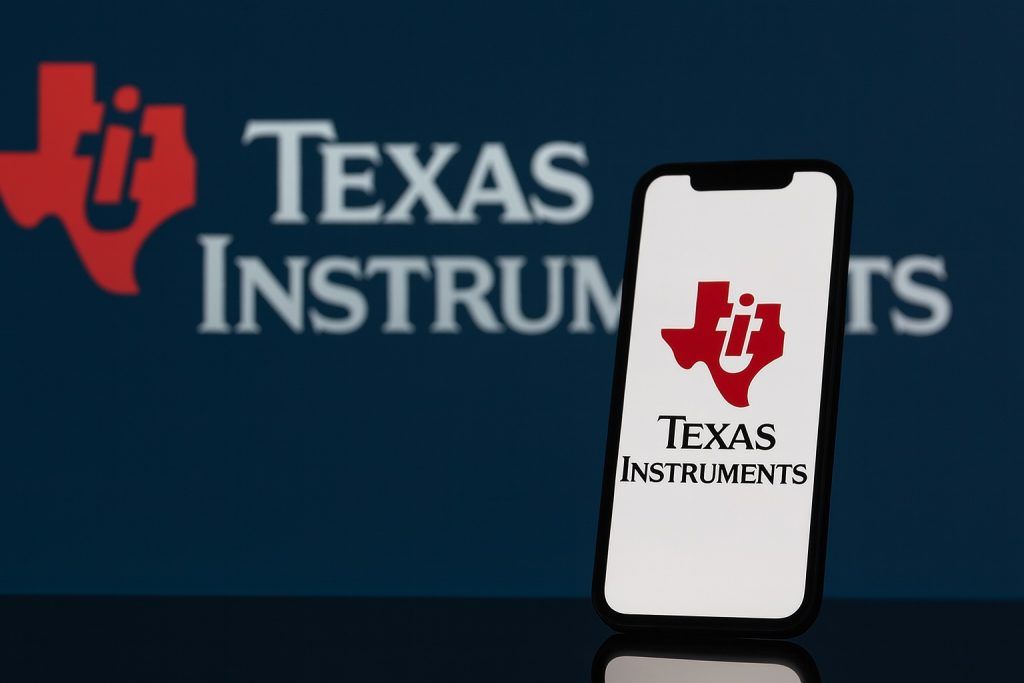Key Facts: Capital One (NYSE: COF) closed at about $217.05 on Oct 21, 2025 (up ~1% on the day) and then jumped into the $224 range in after-hours trade [1]. In Q3 2025 the bank reported net income of $3.2 billion ($4.83/share), vs. a net loss of $4.3B the prior quarter [2]. Capital One’s Board also authorized a $16 billion share buyback starting Oct 21 [3]. However, a $425 M settlement for its 360 Savings account holders faces legal pushback: 18 states say it short-changes customers [4] [5]. Meanwhile, credit card rates remain near record highs (avg. APR ~21% in Q3 2025) [6], boosting loan yields, and the Fed is widely expected to cut rates (~25 bp on Oct 28–29) [7]. Analysts are mostly bullish: 23 analysts rate COF a “Moderate Buy” with a 12-month target near $253 (roughly 16% upside) [8], though targets range from about $208 up to $290.
Big Q3 Earnings Fuel Stock Move
Capital One’s Q3 results far exceeded expectations. The bank said net income was $3.2 billion ($4.83 per share), swinging from a loss in the prior quarter [9]. Total net revenue jumped to $15.4 billion (up 23% year-over-year) [10] as higher interest income and the Discover deal drove loan growth. Credit costs eased sharply: the loan-loss provision was $2.7B (vs. $11.4B in Q2 as it absorbed Discover’s portfolio) [11]. In fact, Fairbank noted that loans held for investment rose by $3.9B (to $443.2B) driven by credit-card and consumer bank loans [12]. CEO Richard Fairbank hailed the quarter as a “significant milestone,” praising strong top-line growth, credit results, and smooth Discover integration [13].
Investors cheered the numbers. COF’s stock ran up into the $215–$218 range ahead of earnings. (It had traded around $203 on Oct 16 after a sector-wide sell-off [14] [15].) When the earnings were released after the Oct 21 close, COF notched a post-market pop – after-hours quotes show the stock spiked to about $224 (roughly +3.5% from the close) [16]. Analysts cited the beat as vindication: Morgan Stanley, Wells Fargo and others had already raised their targets (now around $255–$267) in anticipation of solid numbers [17].
$16B Buyback and Strong Capital
Alongside earnings, Capital One announced a massive $16 billion stock buyback (effective Oct 21) [18]. This replaces the prior program and underscores the bank’s abundant capital. (Market reactions to buybacks are typically positive – the authorization helps explain some of the stock’s late-day strength.) The buyback also signals management’s confidence in the bank’s balance sheet: Capital One’s tangible capital ratios remained healthy after the Discover merger, and the buyback will only proceed “as conditions warrant.” The Discover acquisition (closed in May 2025) is now fully digested, making COF the largest U.S. credit-card issuer with ~$638 billion in assets [19]. Executives expect meaningful synergies: cost savings, cross-selling, and expansion of the combined payments network [20]. In short, Capital One is now a much bigger institution, generating more fee and interest income from the enhanced scale.
Fed Policy and Credit-Card Environment
Broader financial trends also matter for COF. The Fed is widely expected to begin cutting rates (by about 25 basis points at the Oct 28-29 meeting) [21]. Lower benchmark rates will eventually reduce interest income growth, but card lenders typically reprice loans slower than Fed moves, and Capital One’s yields remain historically high. In fact, consumers are paying an average APR of ~21% on credit-card balances (about 22.8% for balances that accrue interest) [22]. This high yield environment has boosted Capital One’s net interest margin. Meanwhile, consumer credit trends are mixed: average card debt is rising (national average balance ~$7,300, up 5.8% year-over-year) [23], but so far delinquencies have shown only modest increases. Banks like Capital One have built reserves against potential losses – in Q3 COF’s reserve build was only $0.1B, compared to the massive build of the prior quarter. Looking ahead, investors will closely watch any signs of rising charge-offs or losses as rates stay high and economic data evolve.
Regulatory and Legal Overhang
On the regulatory front, Capital One faces a looming challenge. In May 2025 it agreed to a $425 million class-action settlement for holders of its 360 Savings accounts (they were kept at 0.3% APY instead of getting higher rates). Now, 18 state attorneys general (led by New York’s Letitia James) are urging a judge to reject that settlement, saying it short-changes consumers [24] [25]. The objectors note that, under the deal, depositors would only receive about 0.78% interest compensation versus the roughly 3.5% they should have earned [26]. In other words, states argue Capital One would save ~$2.5 billion at the expense of savers. Capital One has fought back, telling the court it “strongly denies” any wrongdoing and that the $425M deal is “reasonable” given litigation risks [27]. A final court hearing is set for November, meaning investors are watching closely; if the settlement is thrown out, COF could face renegotiation or higher costs. (For now, management has reserved the $425M. A judge’s reversal could become a drag on profit and valuation.)
In a separate matter, Capital One settled a lawsuit over its “Capital One Shopping” browser extension (a disclosure case by influencers) in mid-September [28]. That settlement, while undisclosed, should clear a smaller legal overhang and was likely seen as a positive by the market (removing an uncertainty). Regulators have also tightened bank capital rules, but Capital One’s capital ratios comfortably exceed requirements (given its large size) [29].
Analyst Forecasts: Bullish vs. Bearish
Analysts have a broadly bullish bias on COF for both the near and longer term. Bull case: Many firms point to rising loan volumes, fat interest margins and the upcoming buyback. Wells Fargo just added COF to its “Tactical Ideas” list with a $265 target and Overweight rating [30], while Evercore (target $255) and Morgan Stanley ($267) recently reiterated Overweight calls [31]. Barclays ($257 target) and UBS ($266) likewise maintain Buy/Overweight stances [32]. MarketBeat notes a consensus price target of about $253 (roughly +16% from current levels) [33]. In the weeks ahead, any upside catalyst (like better-than-expected Q4 guidance or strong holiday spending) could fuel a rally toward the $230–$260 range (September’s highs).
Bear case: Skeptics highlight higher costs and credit risks. Some caution that, even after the beat, COF’s earnings will slow as expense and reserve builds moderate the current boom. For example, JP Morgan’s analyst holds a Neutral rating with a $235 target [34] (about flat from here). Technically, chart watchers note that a $200 handle (coinciding with the 200-day moving average) is a key support [35]. A decisive break below $200–$202 could trigger further selling, given recent volatility: COF fell to ~$203 on Oct 16 after a broad bank swoon [36] [37]. On the downside, the unresolved 360 Savings lawsuit is a wild card. If the court forces a better deal for depositors, COF might incur extra charges or stricter oversight, which would pressure earnings.
In summary, Capital One’s stock has risen sharply in 2025 (up ~22% YTD as of mid-Oct [38]), driven by high interest income and the Discover merger. The recent earnings and buyback news reinforce the bullish case. Yet investors and analysts remain vigilant about credit trends and regulatory risks. In the short term, COF’s trajectory will hinge on the Q4 economic data and the Nov. 17 hearing on the settlement. Long term, growth depends on how well Capital One integrates Discover, manages costs, and navigates potential rate cuts. For now, sentiment is cautiously positive – many see more upside, but a select group of cautious analysts warn that upside may be capped without further concrete improvements in credit conditions.
Sources: Capital One financial releases and filings [39] [40]; Reuters, stock analysis and tech sites [41] [42] [43]; Fed and industry data [44] [45]; analyst research and news outlets [46] [47]. (All figures as of Oct. 21, 2025.)
References
1. stockanalysis.com, 2. www.gurufocus.com, 3. www.tipranks.com, 4. www.reuters.com, 5. ts2.tech, 6. www.lendingtree.com, 7. www.reuters.com, 8. www.marketbeat.com, 9. www.gurufocus.com, 10. www.gurufocus.com, 11. www.gurufocus.com, 12. www.gurufocus.com, 13. www.gurufocus.com, 14. stockanalysis.com, 15. ts2.tech, 16. stockanalysis.com, 17. stockstotrade.com, 18. www.tipranks.com, 19. ts2.tech, 20. ts2.tech, 21. www.reuters.com, 22. www.lendingtree.com, 23. www.lendingtree.com, 24. www.reuters.com, 25. ts2.tech, 26. ts2.tech, 27. www.reuters.com, 28. ts2.tech, 29. www.federalreserve.gov, 30. stockstotrade.com, 31. stockstotrade.com, 32. stockstotrade.com, 33. www.marketbeat.com, 34. www.benzinga.com, 35. ts2.tech, 36. stockanalysis.com, 37. ts2.tech, 38. ts2.tech, 39. www.gurufocus.com, 40. www.tipranks.com, 41. www.reuters.com, 42. ts2.tech, 43. ts2.tech, 44. www.reuters.com, 45. www.lendingtree.com, 46. www.marketbeat.com, 47. stockstotrade.com







